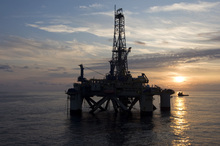Jun 9, 2014
Norwegian oil

Plans by Norwegian oil giant Statoil to explore off the Northland coast are moving closer with the visit of a top executive to the area this week and preparations for seismic work over summer.
The company says New Zealand’s frontier basins fit into its policy of having long-shot prospects in its global portfolio even though another explorer, Anadarko, appears to have struck out after a $1 million-a-day campaign off New Zealand during last summer.
But Statoil – which is 67 per cent owned by the Norwegian Government and contributes to that country’s $1 trillion pension fund – said it would be years before it made any decision to drill, if at all.
“We may be in the area of big oil but as of today we know very little about the region. The likely result of all the activity here is that we conclude not to drill based on technical subsurface reasons,” said the company’s vice-president of exploration, Pal Haremo.
He will meet iwi in Northland this week as part of a consultation programme.
Greenpeace said it opposed Statoil’s presence not only because of the risk deep sea drilling poses off New Zealand but also because of its drilling plans off environmentally vulnerable Bear Island in the Arctic.
The company is conducting a small research survey mapping the seabed with an advanced sonar in the permit area approximately 100km from shore and is committed to collect new 2D seismic data later this year, most likely for two months starting in December.
The company’s Reinga-Northland permit was awarded for 15 years last year and covers an area of 10,000sq km in water up to 609m deep.
“We are in the very early planning of this, the most important decision to drill or not is far ahead of us,” Haremo said.
The 40-year-old company has operations in about 20 countries.
Bloomberg reported last Friday the company wanted to cut operating expenses and staff in a bid to generate an extra US$5 billion of cash a year.
Texas-based Anadarko drilled two wells last summer, one off Taranaki and one off Otago, and is assessing the data gathered after not finding any signs of hydrocarbons on a commercial scale.
A joint venture involving New Zealand Oil & Gas, AWE and Pan Pacific Petroleum has started drilling the Oi prospect off Taranaki which is assessed as having a 16 per cent chance of commercial development.
Greenpeace campaigner Steve Abel said aside from the environmental risks, the royalty benefits for New Zealand of any oil discovered by foreign companies were small compared with the profits they took home.
